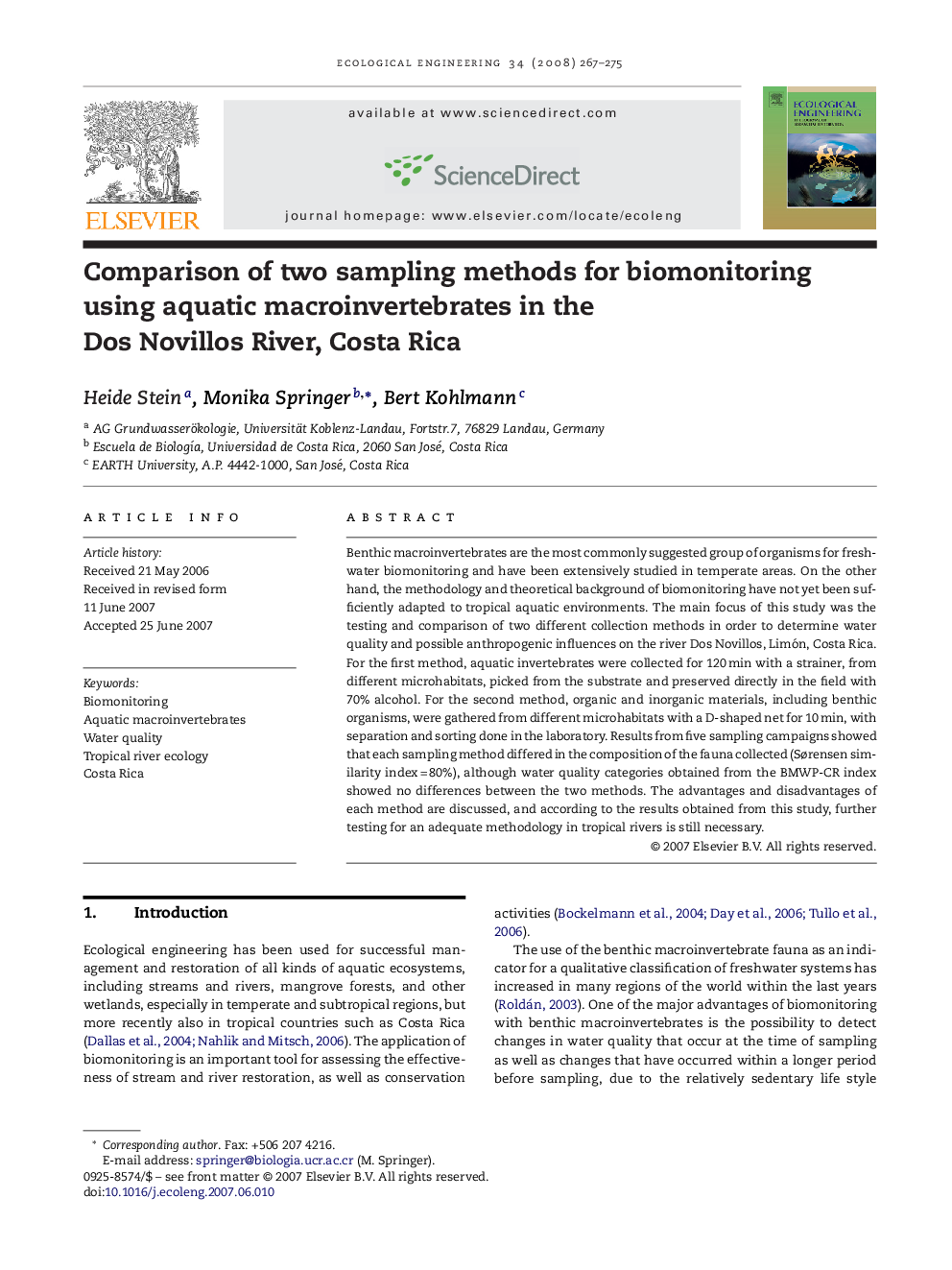| Article ID | Journal | Published Year | Pages | File Type |
|---|---|---|---|---|
| 4390688 | Ecological Engineering | 2008 | 9 Pages |
Benthic macroinvertebrates are the most commonly suggested group of organisms for freshwater biomonitoring and have been extensively studied in temperate areas. On the other hand, the methodology and theoretical background of biomonitoring have not yet been sufficiently adapted to tropical aquatic environments. The main focus of this study was the testing and comparison of two different collection methods in order to determine water quality and possible anthropogenic influences on the river Dos Novillos, Limón, Costa Rica. For the first method, aquatic invertebrates were collected for 120 min with a strainer, from different microhabitats, picked from the substrate and preserved directly in the field with 70% alcohol. For the second method, organic and inorganic materials, including benthic organisms, were gathered from different microhabitats with a D-shaped net for 10 min, with separation and sorting done in the laboratory. Results from five sampling campaigns showed that each sampling method differed in the composition of the fauna collected (Sørensen similarity index = 80%), although water quality categories obtained from the BMWP-CR index showed no differences between the two methods. The advantages and disadvantages of each method are discussed, and according to the results obtained from this study, further testing for an adequate methodology in tropical rivers is still necessary.
